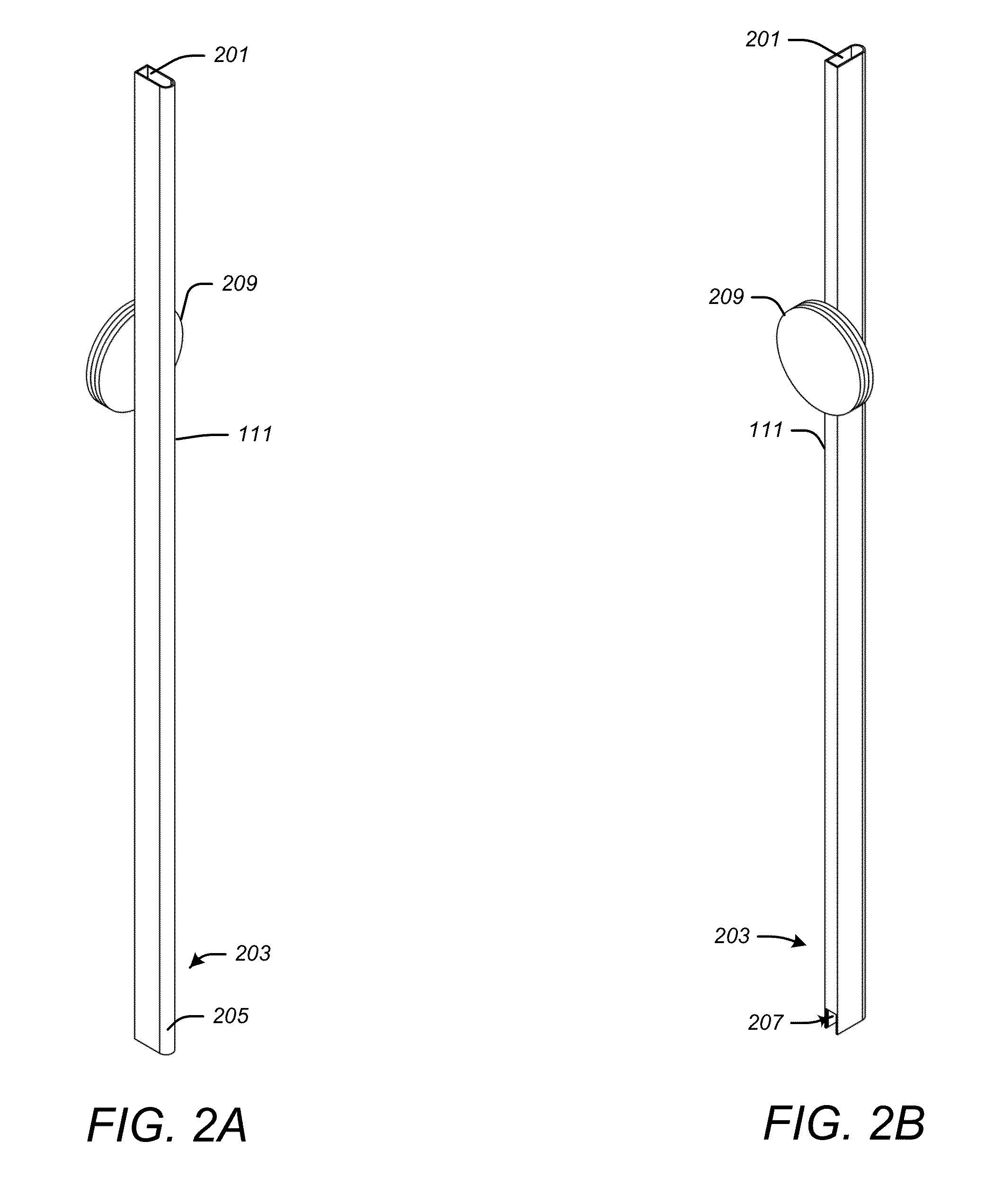Inserting inhibitor to create part boundary isolation during 3D printing
a 3d printing and inhibitor technology, applied in the field of printers, can solve the problems of difficult separation of adjacent, uninhibited powder regions after they are sintered, and achieve the effect of preventing the formation of uninhibited powder regions
- Summary
- Abstract
- Description
- Claims
- Application Information
AI Technical Summary
Benefits of technology
Problems solved by technology
Method used
Image
Examples
Embodiment Construction
[0033]Illustrative embodiments are now described. Other embodiments may be used in addition or instead. Details that may be apparent or unnecessary may be omitted to save space or for a more effective presentation. Some embodiments may be practiced with additional components or steps and / or without all of the components or steps that are described.
[0034]FIG. 1 illustrates an example of a 3D printing system that creates part boundary isolation during 3D printing by inserting inhibitor material. The 3D printing system may include fusible powder 101 that fuses when subjected to a fusing condition; a deposition system that may include a powder spreading roller 103 that deposits portions of the fusible powder in form of a thin layer; a fusing system (not shown) that applies the fusing condition to the deposited fusible powder; inhibitor material 105 that may be in a hopper and that does not fuse when subjected to the fusing condition; and an insertion system that inserts a portion of the...
PUM
| Property | Measurement | Unit |
|---|---|---|
| shape | aaaaa | aaaaa |
| force | aaaaa | aaaaa |
| gravity | aaaaa | aaaaa |
Abstract
Description
Claims
Application Information
 Login to View More
Login to View More - R&D
- Intellectual Property
- Life Sciences
- Materials
- Tech Scout
- Unparalleled Data Quality
- Higher Quality Content
- 60% Fewer Hallucinations
Browse by: Latest US Patents, China's latest patents, Technical Efficacy Thesaurus, Application Domain, Technology Topic, Popular Technical Reports.
© 2025 PatSnap. All rights reserved.Legal|Privacy policy|Modern Slavery Act Transparency Statement|Sitemap|About US| Contact US: help@patsnap.com



